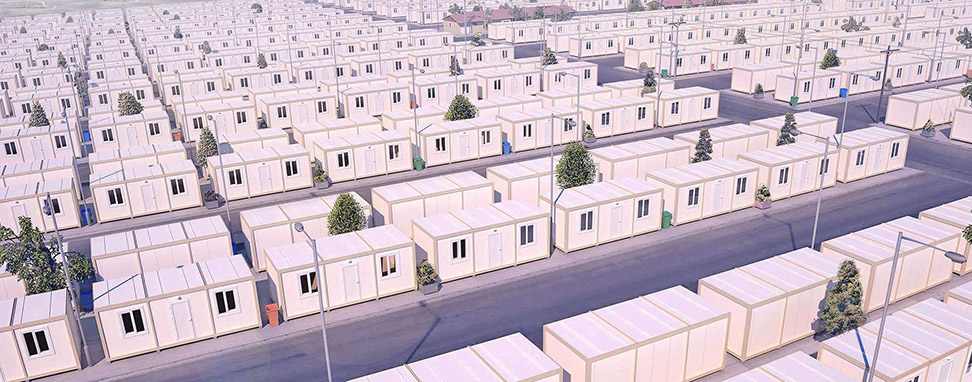Transporting and placing metal containers at a construction site involves several logistical challenges and considerations. Addressing these effectively is crucial for the smooth and safe execution of the project. Here are some key points to consider:
Transportation Challenges:
Size and Weight:
Dimensions: Standard shipping containers come in 20-foot and 40-foot lengths, with a height and width of approximately 8 feet. Their size requires specialized transportation vehicles.
Weight: An empty 20-foot container weighs around 5,000 pounds, while a 40-foot container weighs approximately 8,000 pounds. The weight can increase significantly when modified with additional materials.
Transport Vehicles:

Flatbed Trucks: Typically used for transporting containers. Ensure the truck has the capacity and proper equipment to secure and transport the containers safely.
Permits: Depending on the size and route, special permits may be required for transporting oversized loads.
Route Planning:
Clearances: Ensure that roads, bridges, and overpasses can accommodate the height and width of the containers.
Road Conditions: Consider road conditions, weight restrictions, and any potential obstacles along the route.
Access to Site: Ensure that the construction site is accessible for large transport vehicles. This may involve clearing paths or securing temporary access permissions.
Site Preparation:
Foundation and Groundwork:
Level Ground: The site must be leveled and prepared to support the weight of the containers.
Foundation: Depending on soil conditions and design requirements, a proper foundation must be constructed. Options include concrete piers, slabs, or footings.
Drainage: Ensure proper drainage around the site to prevent water accumulation and soil erosion.
Utility Connections:
Electricity, Water, and Sewer: Plan and prepare for the connection of utilities to the container house. This may involve trenching and laying pipes or cables before the containers are placed.
Permits and Inspections: Obtain necessary permits and schedule inspections for utility connections.
Placement Challenges:
Cranes and Lifting Equipment:
Cranes: A crane or heavy-duty lifting equipment is often required to lift and position the containers onto the foundation.
Site Access: Ensure that the crane has adequate access to the site and sufficient space to operate safely.
Positioning and Alignment:
Precise Placement: Accurate positioning is critical, especially if multiple containers need to be aligned or stacked. Use markers and guide systems to ensure correct placement.
Leveling: Ensure that the containers are level once placed to prevent structural issues and ensure proper alignment of doors and windows.
Weather and Timing:
Weather Conditions:
Wind and Rain: Plan the transportation and placement activities around weather conditions to avoid complications from high winds, heavy rain, or snow.
Seasonal Considerations: Consider the season and potential weather impacts on site accessibility and ground conditions.
Scheduling:
Coordination: Coordinate the timing of transportation, crane availability, and site preparation activities to ensure smooth workflow and minimize downtime.
Contingency Plans: Have contingency plans in place for unexpected delays or issues.
Regulatory and Safety Considerations:
Building Codes and Regulations:
Compliance: Ensure that all activities comply with local building codes and regulations. This includes structural modifications, utility connections, and safety standards.
Inspections: Schedule necessary inspections at various stages of the project.
Safety Protocols:
Worker Safety: Implement safety protocols for workers involved in transportation, lifting, and placement activities. Provide necessary training and protective equipment.
Site Security: Secure the site to prevent unauthorized access and ensure safety during construction.
By addressing these logistical challenges and considerations, the process of transporting and placing metal containers at a construction site can be managed efficiently and safely, laying the foundation for a successful container house project.








